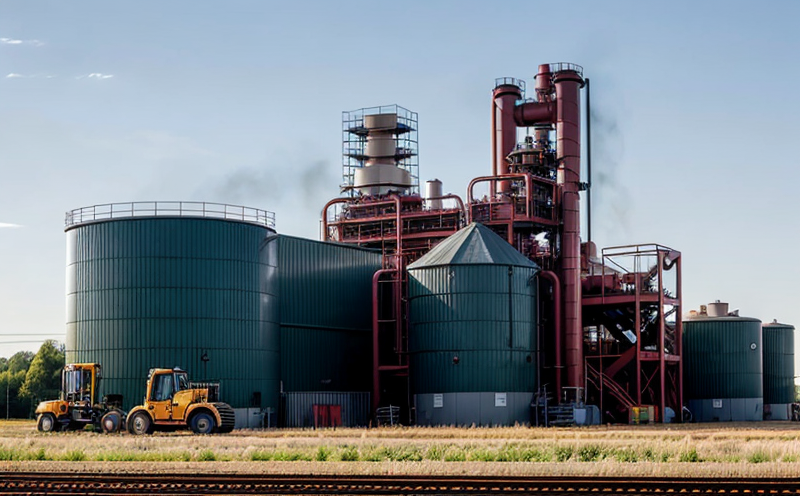ISO 11200 Packaging Machinery Acoustic Testing
The ISO 11200 standard is specifically designed to evaluate the noise emission levels of packaging machinery. This service ensures that manufacturers meet stringent acoustic standards, thereby contributing to a quieter and more sustainable environment. By adhering to this international standard, companies can demonstrate compliance with regulatory requirements while enhancing their reputation for environmental responsibility.
The testing process involves several critical steps aimed at ensuring accurate and reliable results. Firstly, the machinery is carefully prepared according to specified guidelines outlined in ISO 11200. This includes ensuring that all components are operational and that any necessary adjustments have been made prior to testing. The test environment must also be controlled, often requiring a soundproof chamber to minimize external noise interference.
The actual acoustic measurement process is conducted using advanced equipment such as sound level meters or octave band analyzers. These instruments capture the frequency range of the noise emissions and compare them against established limits specified in ISO 11200. The test duration can vary depending on the complexity of the machinery, but it generally involves continuous monitoring over a defined period.
Once testing is complete, detailed reports are generated summarizing all findings. These reports not only include numerical data but also provide insights into potential areas for improvement. For instance, if certain components emit noise beyond acceptable levels, recommendations may be made to redesign or modify these parts. Additionally, the report highlights any non-compliance issues that require immediate attention.
This service plays a pivotal role in maintaining high standards of quality and reliability within the packaging machinery industry. It helps identify and rectify acoustic inefficiencies early on, preventing costly repairs later down the line. Moreover, by ensuring compliance with international standards like ISO 11200, manufacturers can open up new markets and gain competitive advantages.
The importance of this testing cannot be overstated, especially given increasing global awareness about noise pollution and its impact on public health. Compliance with such standards also fosters trust among consumers who increasingly seek eco-friendly products. Thus, investing in ISO 11200 Packaging Machinery Acoustic Testing is not just a regulatory necessity but an essential step towards sustainable development.
In conclusion, this service offers comprehensive acoustic testing tailored to packaging machinery, leveraging state-of-the-art technology and international best practices. It ensures that products meet rigorous standards, promoting both environmental friendliness and operational efficiency.
Applied Standards
The ISO 11200 standard provides detailed guidelines for measuring the noise emissions of packaging machinery. This includes specific methodologies for setting up test environments and conducting measurements, ensuring consistency across different laboratories worldwide.
Key aspects covered by ISO 11200 include:
- Determination of sound pressure levels
- Measurement techniques using appropriate instrumentation
- Environmental conditions influencing noise emissions
- Data analysis and reporting requirements
The standard also emphasizes the importance of accurate calibration of measurement equipment, which is crucial for obtaining reliable results. Compliance with these standards ensures that all tests are performed consistently and accurately, fostering trust in test outcomes.
Quality and Reliability Assurance
ISO 11200 Packaging Machinery Acoustic Testing plays a vital role in maintaining quality and reliability within the packaging machinery industry. By adhering to this standard, manufacturers can ensure that their products consistently meet specified acoustic performance criteria.
This service contributes significantly to overall product quality by identifying potential issues early on during development stages. Through rigorous testing procedures, defects or design flaws leading to excessive noise emissions are promptly detected and addressed. This proactive approach helps prevent costly recalls or warranty claims after the machinery has been deployed in operational settings.
Moreover, regular acoustic testing ensures ongoing compliance with changing regulations and customer expectations regarding environmental sustainability. As awareness around noise pollution continues to grow globally, meeting these evolving standards becomes increasingly important for maintaining a positive brand image and gaining market acceptance.
Customer Impact and Satisfaction
The impact of ISO 11200 Packaging Machinery Acoustic Testing extends beyond mere regulatory compliance; it significantly enhances customer satisfaction by delivering products that meet or exceed expectations. When machinery operates quietly, it contributes to a more pleasant working environment for operators and users alike.
Customers benefit from increased productivity and reduced operational costs as quieter machines often require less frequent maintenance due to fewer mechanical stressors caused by excessive noise. Furthermore, the enhanced reputation associated with adhering to international standards like ISO 11200 can attract new business opportunities and foster long-term relationships with satisfied customers.
By demonstrating commitment to environmental responsibility through this testing process, companies position themselves as leaders in sustainable practices, which resonates positively with environmentally conscious consumers. This strategic investment ultimately leads to higher customer loyalty and satisfaction levels.





